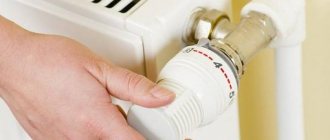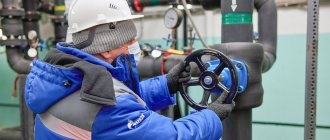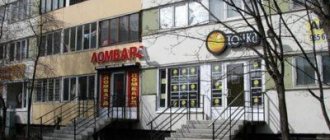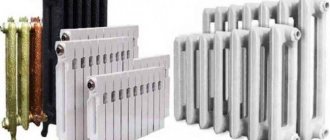Residents of city apartments have repeatedly encountered incomprehensible numbers found on their heating receipts. Often people do not understand where such figures come from and why, for example, a neighbor on the site pays much less. In fact, the payment amount is not taken from the ceiling: there is a special standard for thermal energy consumption for heating, on the basis of which the final amounts payable are compiled in accordance with government-approved tariffs. Let's try to figure out this issue.
When calculating the described standards, the fact that a comfortable temperature must be ensured in residential premises is taken into account. This point is regulated by GOST R51617-2000. Below are approximate values for this temperature.
Therefore, if in winter the temperature in your apartment is lower than the above indicators, it means that your house receives less thermal energy than currently approved standards require. In most cases, the wear and tear of urban heating networks is to blame, during which the generated energy partially goes into the air. Be that as it may, heating standards are not respected, so consumers have every right to file a corresponding complaint and demand a recalculation of tariff plans.
The choice of one or another calculation method depends on whether a heat meter is installed in the house or apartment. In the absence of a general house meter, tariffs are calculated according to standards, and those, as we have already found out, are determined by local authorities. This is done through a special decree, which also determines the payment schedule - whether you will pay all year round or exclusively during the heating season. And if you want to know the exact numbers specifically for your region, you can:
If there is no home accounting device, then you must remember Decree No. 344, which was adopted back in 2013. According to this document, in the absence of a meter (but if it is technically possible to install it), increasing coefficients are used:
Note! All figures above are given without the increase in the cost of heating services. It turns out that if you don’t have a meter in your house, although in theory you can install one there, it means that you will a priori pay more. And all because, in accordance with the mentioned document, the tariff calculated according to the standards will be multiplied by a coefficient.
Now let’s find out exactly how heating calculations should be carried out. Just a few years ago, the heating standard was a key parameter when calculating the required payment for heating services. The formula itself is extremely simple: it is necessary to multiply the standard indicator by the area of the heated room in order to ultimately obtain the amount of thermal energy that is necessary to heat the living space. Next, this quantity should be multiplied by the current tariff and the total amount is obtained.
- 1 About the normal temperature in the apartment
- 2 Basic calculation methods
- 3 Calculation of heating costs according to standards 3.1 Scheme No. 1. There is no individual meter, but there is a communal metering device
- 3.2 Scheme No. 2. Your home does not have both a common and individual meter
- 3.3 Scheme No. 3. If both the house and apartment are equipped with heat consumption meters
Legislative solution to the issue
With the onset of cold weather, the issue of warmth at home is especially acute. Owners of private houses are luckier - homeowners independently set the beginning and end of the heating season, humidity and temperature conditions. But residents of apartment buildings depend on the state, because the standards for heat supply in an apartment building, humidity and temperature conditions are set out in Appendix No. 2 to SanPiN 2.1.2.2645-10. These standards apply only to residential premises; non-residential rooms or industrial premises do not meet the established standards.
The final stage of work
At the last stage, the radiators are connected, and their internal diameter and volume of sections are calculated taking into account the type of supply and cooling rate of the coolant. Since central heating is a complex system of interconnected components, it is quite difficult to replace radiators or repair jumpers in a particular apartment, because dismantling any element can cause interruptions in the heating supply of the entire house.
Therefore, apartment owners who use central heating for heating are not recommended to independently carry out any manipulations with radiators and the piping system, since the slightest intervention can turn into a serious problem.
In general, a well-designed, efficient heating scheme for a residential apartment building allows one to achieve good performance in matters of heat supply and heating.
Temperature and Humidity Requirements
In accordance with the requirements of SanPiN, the following values for temperature and humidity are established:
| Residential category | Air temperature in the room, °C | Resulting temperature, °C | Relative humidity, % | |||
| optimal | acceptable | optimal | acceptable | optimal | acceptable | |
| Indicators for the cold season | ||||||
| Heating standards for apartments: living room | 20-22 | 18-24 | 19-20 | 17-23 | 45-30 | 60 |
| The same in the areas of the coldest five-day period (minus 31 °C and below) | 21-23 | 20-24 | 20-22 | 19-23 | 45-30 | 60 |
| Kitchen | 19-21 | 18-26 | 18-20 | 17-25 | Not standardized | |
| Toilet | 19-21 | 18-26 | 18-20 | 17-25 | ||
| Bathroom or combined bathroom | 24-26 | 18-26 | 23-27 | 17-26 | ||
| Inter-apartment corridor | 18-20 | 16-22 | 17-19 | 15-21 | 45-30 | 60 |
| Lobby, staircase | 16-18 | 14-20 | 15-17 | 13-19 | Not standardized | |
| Storerooms | 16-18 | 12-22 | 15-17 | 11-21 | ||
| Values for the warm season | ||||||
| Living room | 22-25 | 20-28 | 22-24 | 18-27 | 60-30 | 65 |
Unified heating standards for apartment buildings
The established standards for heat supply to apartments are standardized. This means that the values are defined in general as the average temperature throughout the hospital. But officials have provided additional rules and exceptions.
Firstly, exceptions apply to rooms with a corner location in the building layout. In the corner room, the temperature should be two degrees higher than the approved standard. The requirement is due to the fact that the angular location implies freezing of the walls.
The temperature requirements at night are more gentle: between 00:00 and 05:00 the temperature can drop to 4 degrees Celsius. This is due to the fact that at night human life processes slow down and the need for heat is somewhat reduced.
Using our table, check whether the heating standard in an apartment building is met in 2021 in your apartment:
| Residential category | Minimum temperature for the cold season (heating standards) |
| Living room of an apartment, house or dormitory | 18 (20 in corner room) |
| The same in areas with the coldest five-day temperature (probability 0.92) minus 31 °C and below | 20 (22 in the corner room) |
| Apartment and dormitory kitchen, vat | 18 |
| Drying cabinet for clothes and shoes in the apartment | – |
| Bathroom | 25 |
| Individual restroom | 18 |
| Combined toilet and bathroom area | 25 |
| The same, with individual heating | 18 |
| Common washroom | 18 |
| Shared shower | 25 |
| Shared restroom | 16 |
| Dressing room for cleaning and ironing clothes, washroom in the dormitory | 18 |
| Lobby, common corridor, hallway in an apartment building, staircase | 16 |
| Lobby, common corridor, staircase in the dormitory | 18 |
| Laundry room | 15 |
| Ironing and drying rooms in dormitories | 15 |
| Storage rooms for storing personal belongings and sports equipment; household and linen in the hostel | 12 |
| Isolation room in a dormitory | 20 |
| Elevator machine room | 5 |
| Garbage collection chamber | 5 |
Heating standards for private households
There are no requirements for how the owner can heat his home. There is no special heating standard in a private home, and everyone regulates the heat according to their own desire and well-being.
But it is important to understand that if several families live in one household and the heating is common, then the same requirements will have to be observed. For such cases, central heating standards are mandatory.
Despite the lack of standards, no one has canceled the requirements for the design of a boiler room for a private house and fire safety. Before starting heating equipment in a private household, you will have to coordinate the boiler room with government agencies.
Energy
How to calculate energy costs with your own hands, knowing the heat consumption?
It is enough to know the calorific value of the corresponding fuel.
The easiest way is to calculate the energy consumption for heating a house: it is exactly equal to the amount of heat produced by direct heating.
An electric boiler converts all consumed electricity into heat.
Thus, the average power of an electric heating boiler in the last case we considered will be equal to 4.33 kilowatts. If the price of a kilowatt-hour of heat is 3.6 rubles, then we will spend 4.33*3.6=15.6 rubles per hour, 15*6*24=374 rubles per day, and so on.
It is useful for owners of solid fuel boilers to know that firewood consumption rates for heating are about 0.4 kg/kWh. Coal consumption rates for heating are half as much - 0.2 kg/kWh.
Coal has a fairly high calorific value.
Thus, in order to calculate the average hourly consumption of firewood with your own hands at an average heating power of 4.33 kW, it is enough to multiply 4.33 by 0.4: 4.33 * 0.4 = 1.732 kg. The same instructions apply to other coolants - just look in the reference books.
Heating season in Russia
The heating season is a period of the cold season during which residential buildings are provided with heat or thermal energy according to established heating standards. There is no specific duration established in Russia. Everything depends on weather conditions.
The standard heating season lasts in Russia from October to April. But each region has its own temperature and weather, so officials have established rules for determining the beginning and end of the heating season:
- The beginning is established on the condition that the average daily street temperature is minus 8 degrees or below for five days in a row;
- Completion is established provided that there is warm weather outside the window of 8 degrees and above for five days in a row.
Preparation for the heating season begins one and a half to two months before it starts. Preparatory activities include:
- checking the integrity of heating devices and structures;
- checking the performance of thermal equipment of boiler houses;
- checking meters and metering devices;
- commissioning works;
- checking for compliance with the standard water temperature in heating radiators in residential premises, etc.
Residents are notified in advance about preparations for the heating season by posting relevant notices on their entrance doors.
IMPORTANT!
Preparation is a mandatory stage before the start of the heating season, since the check allows you to prevent emergency situations, identify the reasons for exceeding heat consumption standards in the MDC, and provide residents with quality service.
In private households, the owner is responsible for commissioning work. But gas and utility companies conduct annual fitness inspections of equipment. If violations are detected, the owner will receive an order requiring them to eliminate the comments.
Computations
It is almost impossible to calculate the exact value of heat loss for an arbitrary building. However, methods for approximate calculations have long been developed that give fairly accurate average results within the limits of statistics. These calculation schemes are often referred to as calculations based on aggregated indicators (meters).
Along with thermal power, there is often a need to calculate daily, hourly, annual thermal energy consumption or average power consumption. How to do it? Let's give a few examples.
Hourly heat consumption for heating using enlarged meters is calculated using the formula Qot=q*a*k*(tin-tno)*V, where:
- Qot - the desired value in kilocalories.
- q is the specific heating value of the house in kcal/(m3*S*hour). It is looked up in directories for each type of building.
The specific heating characteristic is tied to the size, age and type of building.
- a is the ventilation correction factor (usually 1.05 - 1.1).
- k is the correction factor for the climatic zone (0.8 - 2.0 for different climatic zones).
- tin - internal temperature in the room (+18 - +22 C).
- tno - street temperature.
- V is the volume of the building together with the enclosing structures.
To calculate the approximate annual heat consumption for heating in a building with a specific consumption of 125 kJ/(m2*S*day) and an area of 100 m2, located in a climate zone with the GSOP=6000 parameter, you just need to multiply 125 by 100 (house area ) and by 6000 (degree days of the heating period). 125 * 100 * 6000 = 75,000,000 kJ, or approximately 18 gigacalories, or 20,800 kilowatt-hours.
To recalculate the annual consumption into the average thermal power of heating equipment. it is enough to divide it by the length of the heating season in hours. If it lasts 200 days, the average heating power in the above case will be 20800/200/24=4.33 kW.
How is heat payment calculated?
Any public service is provided in our country on a paid basis. Owners of private houses usually receive receipts for gas - the supplier calculates the volume of gas consumed and issues an invoice.
In urban and suburban apartment buildings (MKD), payment is calculated differently, and we are talking about centralized heating. The rules for calculating the standard for heating an apartment building are enshrined in Decree of the Government of the Russian Federation dated May 23, 2006 No. 306 (as amended on September 29, 2017). According to formula 18, the calculation of what the standard Gcal per m² is based on the total heat consumption, the duration of the heating season and the heated area.
In some multi-family houses, individual gas equipment is installed, and payment for heat is made by analogy with private houses - based on the volume of gas consumed.
Heating price standards per square meter are determined individually, depending on the utility service provider’s prices per Gcal. The calculation of the monthly payment is determined depending on the area of the heated room (apartment) and the price factor.
Materials
- The pressure a polypropylene pipe can withstand is always indicated by the manufacturer in its labeling. Marking PN20 (typical for pipes without reinforcement) indicates a working pressure of 20 atmospheres, PN25 (standard for pipes reinforced with fiber and aluminum) - 25 kgf/cm2;
- The temperature of the coolant influences the pressure polypropylene pipes are designed for. Manufacturers always indicate operating pressure at a temperature of 20C. When heated to a maximum of 90 - 95C, the maximum operating pressure decreases to 7 - 9 atmospheres. The service life is also reduced: already at 80 degrees, polypropylene will last not 50, but not more than 25 years;
- All polypropylene fittings are without reinforcement and are designed for a working pressure of 25 atmospheres;
- What pressure can a metal-plastic pipe (with cross-linked polyethylene shells and an aluminum core) withstand? Manufacturers guarantee 10 - 16 atmospheres. The breaking pressure is usually not less than 25. From a practical point of view, metal-plastic can be installed in central heating systems only on the connections to the radiators after the shut-off valves, which make it possible to shut off the water in case of leaks;
- The pressure at which a polyethylene pipe can operate is determined by the ratio of its diameter to the wall thickness (this parameter is called SDR) and the type of polyethylene. Low-pressure polyethylene PE100 is noticeably stronger than high-pressure polyethylene PE32: for example, with the same diameter and wall thickness (SDR21), the first pipe can operate at a pressure of 8 kgf/cm2, and the second - only 2.5;
SDR is the ratio of outside diameter to wall thickness.
- The lower the SDR, the higher the tensile strength
; - There is an inverse relationship between pressure and pipe diameter with constant wall thickness. The larger the diameter, the larger the area of its internal surface, and if so, the greater the force with which the internal environment presses on them. Accordingly, at a constant operating pressure, the wall thickness, depending on the diameter of the pipe, decreases or increases;
- The most reliable and easy-to-install material for central heating systems is corrugated stainless pipe. Due to the corrugation, it absorbs water hammer and withstands the freezing of water in it without destruction. With a stated operating pressure of 10 - 15 atmospheres, the destruction pressure, according to the Lavita company, is 210 kgf/cm2;
Corrugated stainless steel is an ideal material for central heating systems.
- For steel pipes with welded joints, the strength calculation takes into account the strength coefficient of the weld. It is taken equal to 0.6 - 0.8. If a VGP pipe can withstand a pressure of 200 atmospheres without destruction, the design for the finished circuit includes a maximum of 120 - 160;
- All water and gas pipes are electric welded. Accordingly, during defrosting and the accompanying increase in pressure, they tear along the longitudinal seam. After welding a seam using electric arc welding, the strength of the pipe almost does not decrease;
- Central heating systems should be equipped with steel registers or bimetallic radiators. The strength of any system is equal to the strength of its weakest link: is there any point in using pipes that can withstand 150 atmospheres if the radiator collapses at 16?
- The champion in strength among bimetallic ones is Rifar Monolit of domestic production. A working pressure of 50 atmospheres and a destructive pressure of 100 are stated for it.
It’s cold in the apartment, how to deal with it
Non-compliance with heating standards must be reported to the supplier immediately. It is enough to send a written application to the company's dispatch service or contact us by phone. The dispatcher of the receiving party is obliged to record the application and send a team for inspection. In general, the deadline for an on-site inspection is no later than 2 hours from the receipt of a complaint from dissatisfied residents. The time can be additionally agreed upon with the applicant in case the owners are in the apartment and can open the door for measurements.
A sample of such a statement
The visiting team must take appropriate measurements according to the established regulations. Then a report on the results of the control is drawn up. The effective act indicates:
- date and time of inspection;
- venue (apartment address);
- composition of those present;
- measurement methods;
- tools and devices used for measurements;
- results (temperature around the perimeter of the apartment, humidity, and so on).
The act is drawn up in two copies, one for the team and the applicant. If you were not given a copy of the act, take a photo of the document with your phone or camera.
Based on the results of the inspection, work is carried out to identify and eliminate problems with the heating system. If the utility service provider has not taken any action, then contact the regulatory authorities - Rospotrebnadzor or the prosecutor's office. The inspection report of the visiting team will be proof of violations.
Types of radiators
Often, to improve the heating system, radiators need to be replaced. When purchasing, you must consider the following nuances:
- For multi-storey buildings, it is better to choose a cast iron radiator. The device is not damaged by bad water. The devices are resistant to pressure and water hammer;
- Bimetallic radiators are suitable for such houses. The device is made of steel, aluminum and copper. The equipment is protected from shock and corrosion;
- For closed systems it is better to choose an aluminum radiator. The device has an original design and high heat transfer. Due to its low inertness, it is used in conjunction with thermoregulation;
- Steel radiators are of high quality. They weigh a little and have an unusual design.
Heating systems are replaced by competent organizations. Before choosing equipment, you need to get advice on which one is suitable for your home.
After this, the system's functionality is checked. During a major overhaul, meters can be installed immediately. This will allow you to control your utility bills.
Rules for recalculating heating fees in case of non-compliance with standards
If heating standards are not met, then residents have the right to demand compensation in the form of recalculation of utility bills. But before counting the money, let us recall that heat suppliers have the right to legal interruptions in the supply of thermal energy within the following values:
- no more than 24 hours within 1 month (calculated in total);
- no more than 16 hours at a time, provided that the air temperature in living rooms is from +12 °C and above, up to the standard temperature indicated in the tables above;
- no more than 8 hours at a time, provided that the air temperature in living rooms is from +10 °C to +12 °C;
- no more than 4 hours at a time, provided that the temperature in the living room varies from +8 to +10 °C.
If time limits are exceeded, then residents have the right to demand a reduction in heating payments according to the standard by 0.15% for each hour. To receive a recalculation, non-compliance with standards must be documented. That is, an act of examining the temperature in a living room is mandatory. The amount of compensation is calculated from the moment this act is signed.
About the author of the article
Natalya Evdokimova Accountant-expert, practical experience - more than 15 years.
Author of articles in online media on accounting, taxes, and personnel issues.
Ways to normalize temperature conditions
Low temperatures in pipes are fraught with the appearance of mold on the walls and ceiling. However, it does not pose a threat to the heating system, unlike overheating, as mentioned above. There are a number of precautions to prevent damage:
- Heating system safety group. These are three partings having one common body.
Photo 2. Safety group for the heating system, consisting of three devices: pressure gauge, air vent, check valve.
- Safety valve . As you know, water increases in volume when heated, thereby increasing pressure. When it goes beyond normal limits, the valve is activated, normalizing it.
- Pressure gauge. A device for measuring pressure inside the system.
- Automatic air vent. Serves to remove air trapped in the system.
- Mixing unit. Installed to match temperatures. Installed between the supply pipe and the return pipe. When the water heats up, it creates excessive pressure on the valve, thereby opening it. This way the water mixes and cools.
- Electronic heating control unit. The unit measures the temperature of the water in the system in its various sections. In case of overheating, it gives a signal to reduce the power of the water heater.








